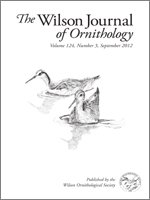We studied geographic variation in the diet of Western Barn Owls (Tyto alba) along a urban-rural gradient in central-eastern Argentina and identified 5,231 prey items. Mammals were present in all samples, whereas birds and amphibians were present in 79.1 and 50.0% of the samples, respectively. There were significant differences in vertebrate assemblages consumed by Barn Owls at the opposite extremes of the gradient. Native sigmodontine rodents comprised 85.8% of the total prey items, especially towards periurban and rural areas. Exotic murid rodents were the main prey item in urban sites, while birds increased in frequency in urban and periurban areas. Food niche breadth and standardized food niche breadth values were higher at intermediate levels of urbanization ( = periurban). This ‘periurban peak’ in species diversity is a relatively well-known pattern, previously reported for taxa such as birds, lizards, bumblebees, and butterflies among others. The trophic habits of Barn Owls along this gradient were mostly similar to those reported in other studies in southern South America, where the main prey items were native rodents and food niche breadth values (measured at the level of Orders) were low. Western Barn Owls in our study maintained specialization as a micromammal predator.
How to translate text using browser tools
1 September 2012
Variation in the Diet of Western Barn Owls (Tyto alba) Along an Urban-Rural Gradient
Pablo Teta,
Carina Hercolini,
Gerardo Cueto
ACCESS THE FULL ARTICLE





